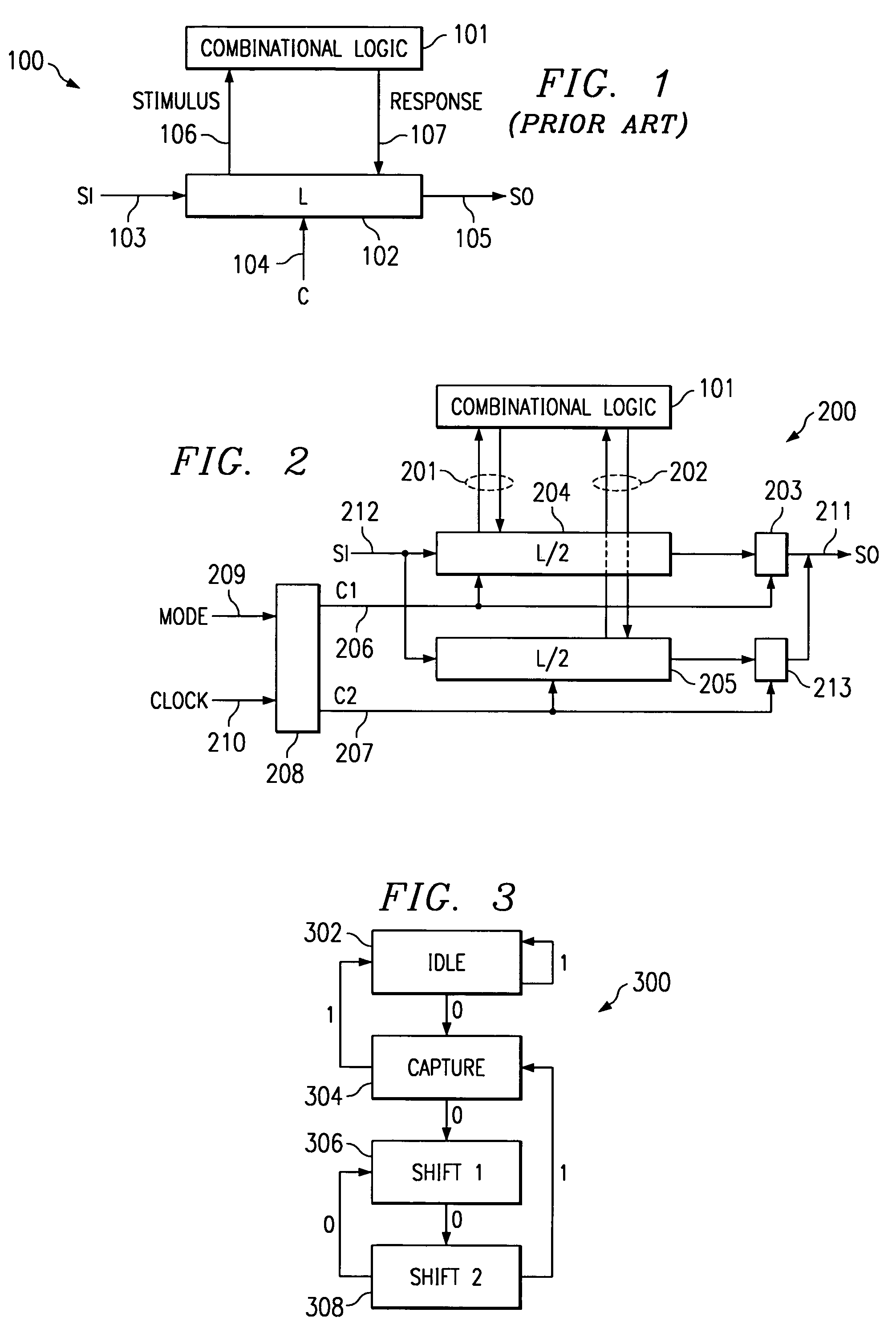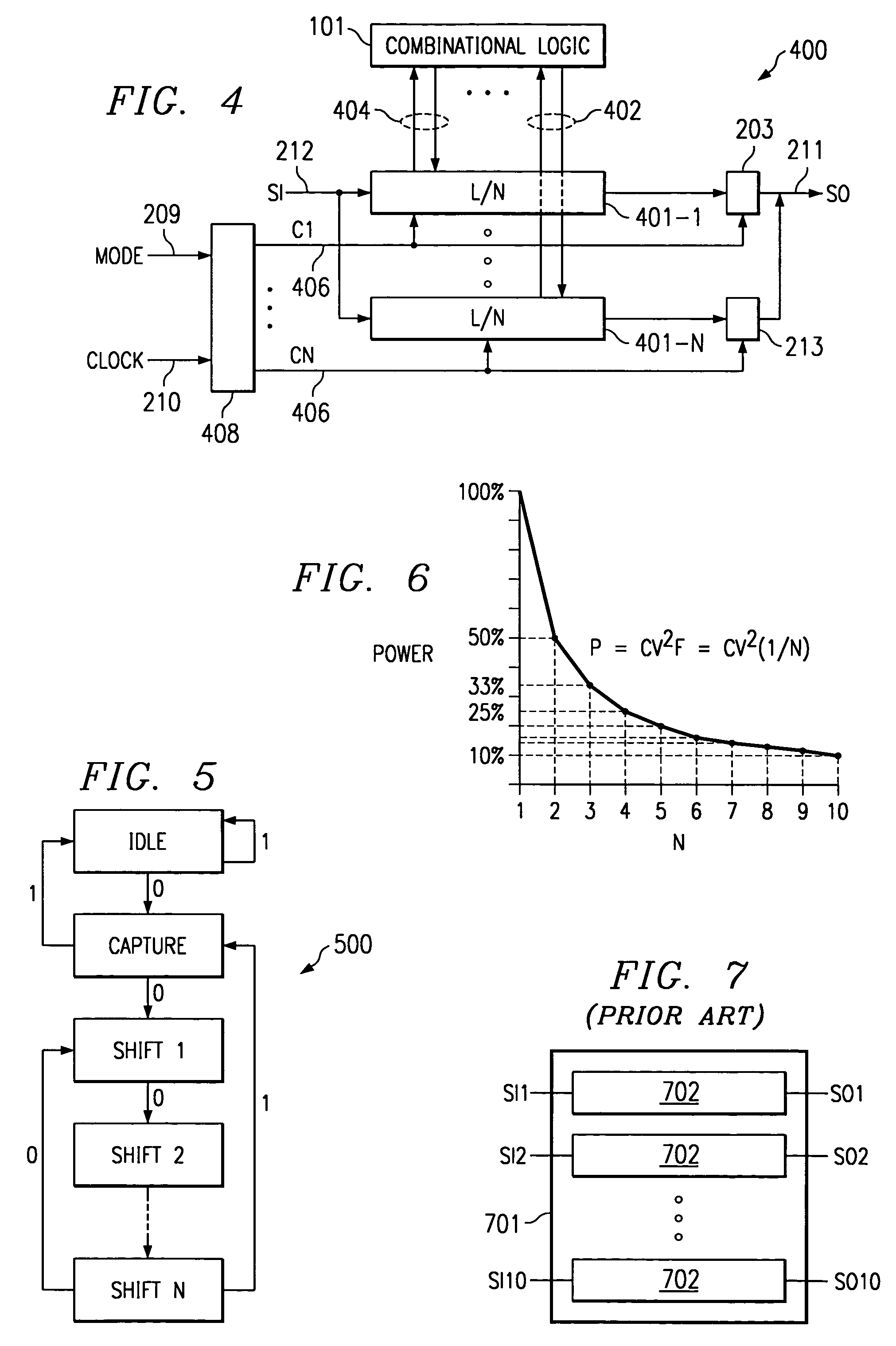IC with separate scan paths and shift states
a scan path and shift state technology, applied in the direction of measurement devices, error detection/correction, instruments, etc., can solve the problems of circuits consuming a significant amount of power and the speed at which these circuits opera
- Summary
- Abstract
- Description
- Claims
- Application Information
AI Technical Summary
Benefits of technology
Problems solved by technology
Method used
Image
Examples
Embodiment Construction
[0013]In FIG. 1 a circuit 100 is placed in a conventional scan test mode. The circuit 100 could be an IC or die, or a subcircuit (core) within an IC or die. In functional mode, the circuit could be a microprocessor, DSP, serial I / O peripheral, or other circuit function. The model illustrates that, during scan test mode, the circuit is partitioned into combinational logic 101 and scan path 102. Scan path 102 comprises functional registers of the circuit (latches / DFFs) 101 that are converted, during test mode, into serially connected scan cells.
[0014]The number of serially connected scan cells determines the length (L) of scan path 102. Each scan cell provides a stimulus input to and response output from combinational logic 101 using interconnects 106 and 107, respectively. The interconnects 106 and 107 are the same interconnects used by the functional registers to communicate functional input and output to the combinational logic during functional mode of the circuit. Scan path 102 r...
PUM
 Login to View More
Login to View More Abstract
Description
Claims
Application Information
 Login to View More
Login to View More - R&D
- Intellectual Property
- Life Sciences
- Materials
- Tech Scout
- Unparalleled Data Quality
- Higher Quality Content
- 60% Fewer Hallucinations
Browse by: Latest US Patents, China's latest patents, Technical Efficacy Thesaurus, Application Domain, Technology Topic, Popular Technical Reports.
© 2025 PatSnap. All rights reserved.Legal|Privacy policy|Modern Slavery Act Transparency Statement|Sitemap|About US| Contact US: help@patsnap.com



